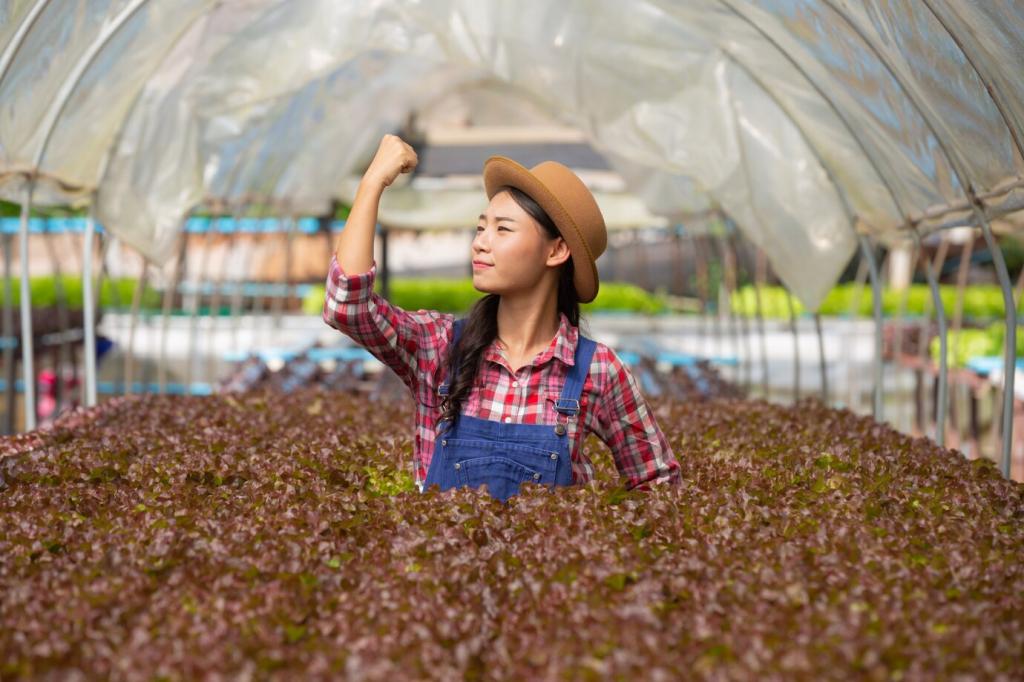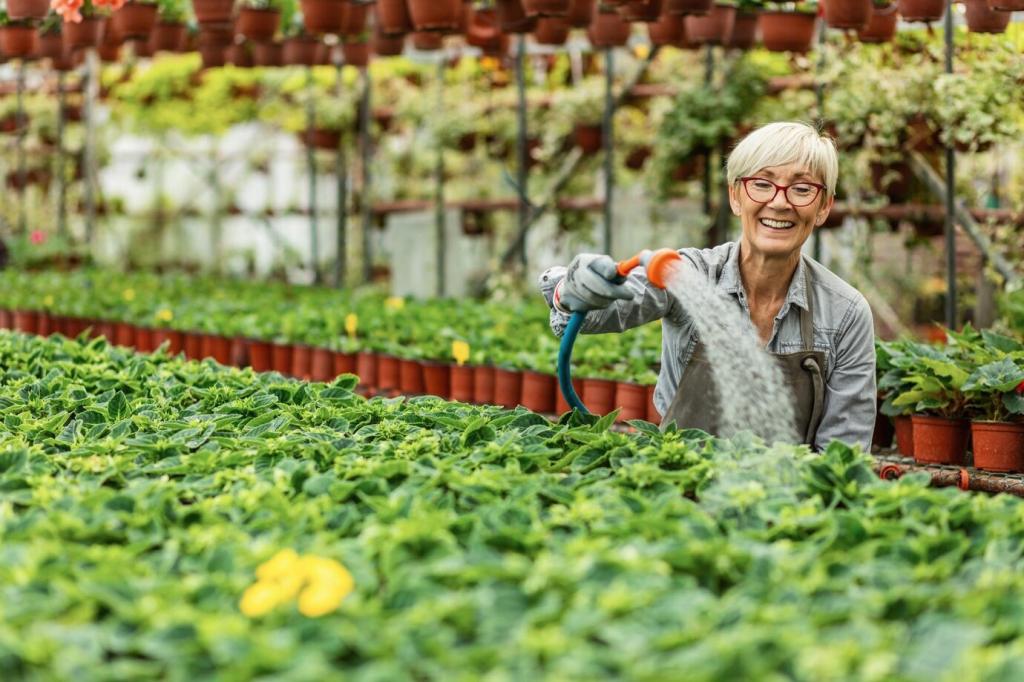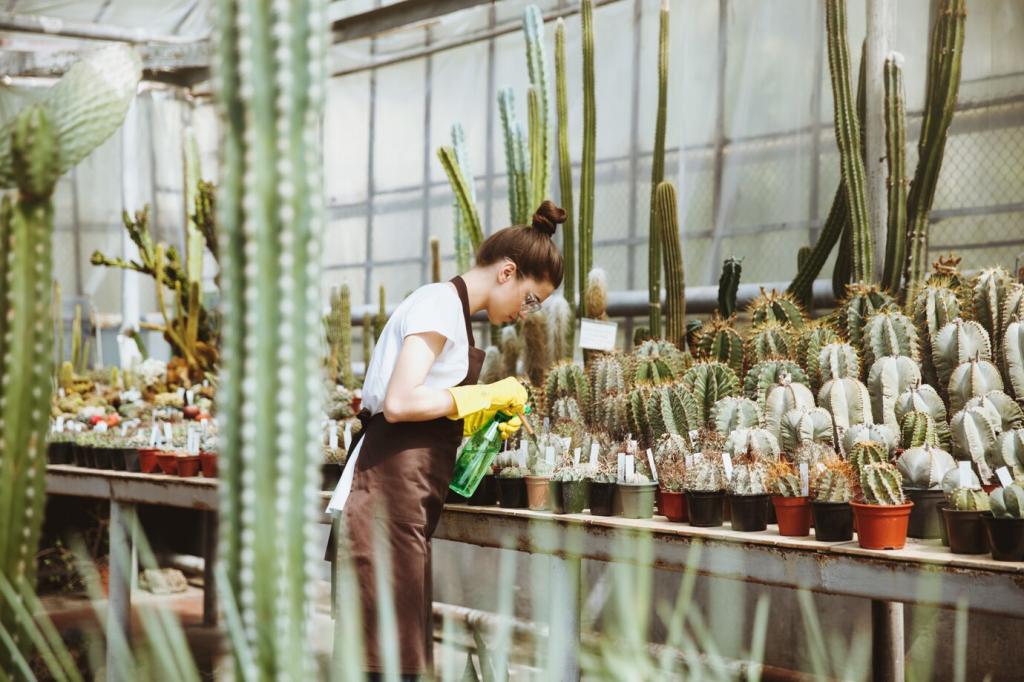Sun, Shade, and Shelter under Tropical Skies
Use breadfruit, banana, or moringa as overstory hosts for greens that prefer dappled light. Callaloo, lettuce, and young ornamentals flourish beneath filtered sun. As the canopy shifts, adjust underplantings to chase the sweet spot between gentle warmth and restful shade.
Sun, Shade, and Shelter under Tropical Skies
A 30–40% shade cloth over nursery benches saves seedlings during blazing hours. Transplant at dusk or pre-dawn, and water in gently to settle roots. This simple timing tweak reduces shock, shortens recovery, and keeps your starts humming along week after week.
Sun, Shade, and Shelter under Tropical Skies
Around bright walls, pathways, or white concrete, plant heat-tolerant borders that buffer reflective glare. Use bougainvillea, ixora, or lantana as colorful shields, tucking fragile herbs just behind. It’s one landscape move that keeps basil from crisping on the sunniest afternoons.



